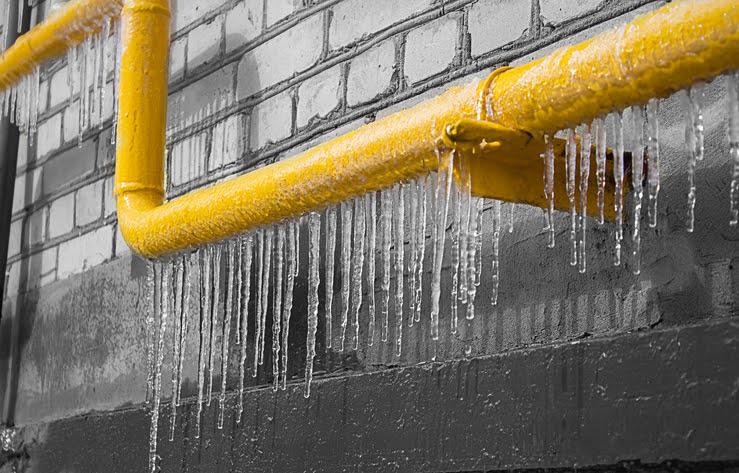How to Avoid Frozen Plumbing in Cold Weather: Expert Guidance
How to Avoid Frozen Plumbing in Cold Weather: Expert Guidance
Blog Article
We have unearthed this great article relating to How To Avoid Freezing Pipes directly below on the internet and think it made perfect sense to discuss it with you over here.

Cold weather can wreak havoc on your plumbing, especially by freezing pipelines. Here's how to avoid it from taking place and what to do if it does.
Intro
As temperatures drop, the risk of frozen pipes increases, potentially causing pricey repairs and water damages. Recognizing how to avoid icy pipelines is crucial for homeowners in chilly environments.
Recognizing Frozen Pipes
What causes pipes to freeze?
Pipes ice up when revealed to temperature levels listed below 32 ° F (0 ° C) for expanded durations. As water inside the pipelines freezes, it broadens, taxing the pipeline wall surfaces and potentially triggering them to burst.
Threats and problems
Frozen pipes can bring about water supply disruptions, residential or commercial property damage, and costly repair work. Burst pipelines can flooding homes and trigger extensive architectural damage.
Signs of Frozen Pipeline
Identifying icy pipes early can avoid them from bursting.
Exactly how to identify frozen pipelines
Search for lowered water flow from taps, uncommon odors or noises from pipelines, and visible frost on subjected pipelines.
Avoidance Tips
Insulating prone pipelines
Wrap pipes in insulation sleeves or utilize warmth tape to shield them from freezing temperatures. Focus on pipes in unheated or outside locations of the home.
Home heating strategies
Maintain indoor rooms properly heated, specifically locations with pipes. Open up closet doors to permit cozy air to distribute around pipes under sinks.
Safeguarding Outside Plumbing
Garden tubes and exterior taps
Detach and drain garden tubes prior to wintertime. Set up frost-proof spigots or cover exterior faucets with insulated caps.
What to Do If Your Pipelines Freeze
Immediate activities to take
If you believe icy pipes, maintain taps available to alleviate stress as the ice melts. Utilize a hairdryer or towels taken in warm water to thaw pipes gradually.
Long-Term Solutions
Structural changes
Consider rerouting pipes far from exterior wall surfaces or unheated locations. Add additional insulation to attic rooms, basements, and crawl spaces.
Updating insulation
Buy premium insulation for pipelines, attics, and walls. Appropriate insulation aids maintain constant temperature levels and lowers the risk of frozen pipes.
Final thought
Protecting against frozen pipelines requires proactive procedures and fast reactions. By comprehending the reasons, signs, and preventive measures, home owners can protect their plumbing during cold weather.
5 Ways to Prevent Frozen Pipes
Drain Outdoor Faucets and Disconnect Hoses
First, close the shut-off valve that controls the flow of water in the pipe to your outdoor faucet. Then, head outside to disconnect and drain your hose and open the outdoor faucet to allow the water to completely drain out of the line. Turn off the faucet when done. Finally, head back to the shut-off valve and drain the remaining water inside the pipe into a bucket or container. Additionally, if you have a home irrigation system, you should consider hiring an expert to clear the system of water each year.
Insulate Pipes
One of the best and most cost-effective methods for preventing frozen water pipes is to wrap your pipes with insulation. This is especially important for areas in your home that aren’t exposed to heat, such as an attic. We suggest using foam sleeves, which can typically be found at your local hardware store.
Keep Heat Running at 65
Your pipes are located inside your walls, and the temperature there is much colder than the rest of the house. To prevent your pipes from freezing, The Insurance Information Institute suggests that you keep your home heated to at least 65 degrees, even when traveling. You may want to invest in smart devices that can keep an eye on the temperature in your home while you’re away.
Leave Water Dripping
Moving water — even a small trickle — can prevent ice from forming inside your pipes. When freezing temps are imminent, start a drip of water from all faucets that serve exposed pipes. Leaving a few faucets running will also help relieve pressure inside the pipes and help prevent a rupture if the water inside freezes.
Open Cupboard Doors
Warm your kitchen and bathroom pipes by opening cupboards and vanities. You should also leave your interior doors ajar to help warm air circulate evenly throughout your home.

As an avid person who reads on How to Prevent Your Pipes From Freezing, I figured sharing that piece of content was beneficial. Loved our write up? Please share it. Help others discover it. Thanks a lot for your time. Return soon.
Schedule A Service Call Report this page